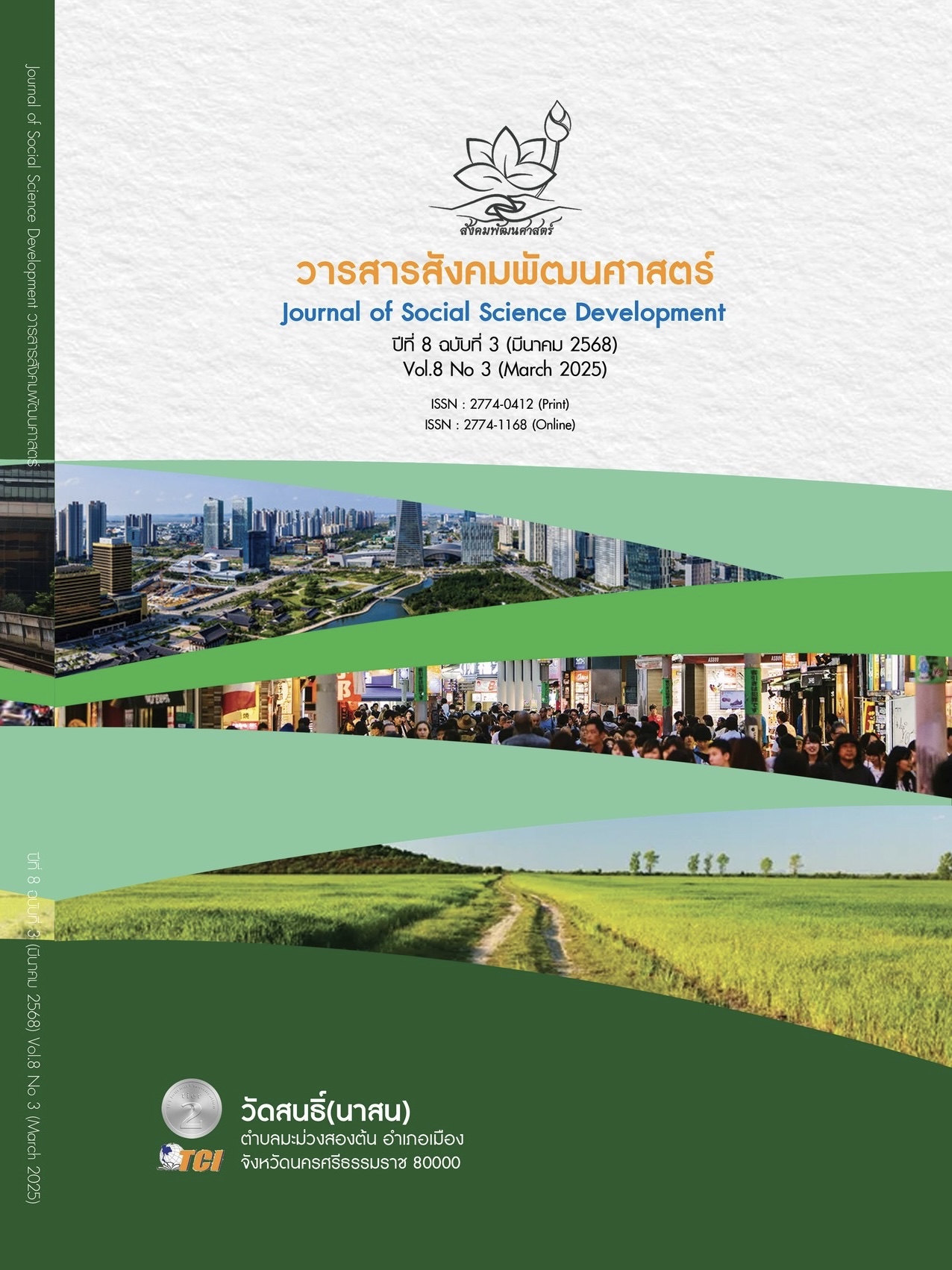BRAND IDENTITY COMMUNICATION FOR FOOD AND BEVERAGE CATEGORIES IN A MUSIC VIDEO BY A T-POP ARTIST
Main Article Content
Abstract
This research is a qualitative study. The objectives of this research are 1) To analyze the identity of food and beverage brands 2) To study the strategies for presenting the identity of food and beverage brands that appear in music videos of T-pop artists. The study was based on concepts, and theories related to Brand Identity and Narrative Theory using textual analysis. The data collection tools are the food and beverage brand identity analysis table and the table of elements of Narrative structure in music videos. Only music videos released between 2022 to 2024 that contain product placement of food and beverage products, totaling 5 songs from 4 brands were chosen: "Hoo Whee Hoo" (Lays), "Love Mode" (Pepsi), "Feeling Bab Wa Ooh!" (Nestlé Purelife), "100%You" (Pepsi), and "I’m Ready!" (Ready). The results of the study consisted of two aspects: in terms of food and beverage brand identity, it was found that brands communicate their identity through various elements, including Brand Positioning, Brand Personality, Visual Identity, Verbal Identity, and Behavioral Identity. In terms of brand identity communication strategies in music videos, it was found that all 4 brands chose to use T-pop artists who were consistent with the stories and target groups to present the brands. Two storytelling were found: storytelling through drama and storytelling through lyrics, along with the use of other storytelling elements, including theme, conflict, characters, settings, point of view, symbols, costume, and visual techniques and communication to present the brands through music videos
Article Details

This work is licensed under a Creative Commons Attribution-NonCommercial-NoDerivatives 4.0 International License.
References
ณิชา ตั้งความดี. (2555). ทัศนคติของผู้บริโภคกลุ่มเจเนอเรชั่นวาย (generation Y) และเจเนอเรชั่นซี (generation Z) ในเขตกรุงเทพมหานครที่มีต่อการทำการตลาดผ่านดนตรี (music marketing). ใน สารนิพนธ์วิทยาศาสตรมหาบัณฑิต สาขาการบริหารการตลาด. มหาวิทยาลัยธรรมศาสตร์.
ทักษิณา พรบุณยาพงศ์. (2566). Soft power ด้วยการตลาดดิจิทัลในรูปแบบโฆษณาแฝง. เรียกใช้เมื่อ 6 กรกฎาคม 2567 จาก https://url.in.th/mOJNd
นิวัต พุทธประสาท. (2565). 7 โครงสร้างการเล่าเรื่อง ที่นักเขียนทุกคนควรรู้: Narrative Structures. เรียกใช้เมื่อ 8 กรกฎาคม 2567 จาก https://porcupinebook.com/7-narrative-structures/
ปรีดี นุกุลสมปรารถนา. (2567). รวมสถิติและ Insight สำคัญๆของคนไทยกับการใช้ Digital และ Social Media 2024. เรียกใช้เมื่อ 4 สิงหาคม 2567 จาก https://www.popticles.com/insight/thailand-digital-and-social-media-stats-2024/
ปวรรศ จันทร์เพ็ญ. (2556). กลยุทธ์ใหม่กับโฆษณาแฝงในปัจจุบัน. วารสารวิชาการนิเทศสยามปริทัศน์, 12(13), 101-107.
ภูริทัต ว่องพุฒิพงศ์. (2563). ทฤษฎีโครงสร้างการเล่าเรื่อง. เรียกใช้เมื่อ 5 สิงหาคม 2567 จาก https://pharmconnection.blogspot.com/2020/09/storytelling.html
สรสิช ลีลานุกิจ. (2567). Spotify เผยศิลปินไทยโต 3 เท่า T-Pop ขึ้นแท่นแนวเพลงอันดับ 1 ในไทยกับชื่อเสียงที่ดังไกลถึงเมืองนอก. เรียกใช้เมื่อ 4 สิงหาคม 2567 จาก https://thestandard.co/spotify-unveiled-thai-artist-3-times-growth/
Center for Nutrition in Schools. (2020). How Can Advertisements Influence Your Food Choices? Retrieved January 27, 2025, from https://cns.ucdavis.edu/news/how-can-advertisements-influence-your-food-choices
Relevant Audience. (2566). 30 สถิติของการทำ Content Marketing ที่นักการตลาดต้องรู้ในปี 2023. เรียกใช้เมื่อ 10 กันยายน 2567 จาก https://www.relevantaudience.com/th/30-statistics-of-content-marketing/
TopTen. (2566). เมื่อ ‘T-Pop’ ถูกชุบชีวิตโดยเทรนด์ ‘วิดีโอสั้น’ สู่โอกาสของแบรนด์ที่จะโกย ‘Fandom’ มาเป็นลูกค้า. เรียกใช้เมื่อ 11 กันยายน 2567 จาก https://positioningmag.com/?p=1447521


